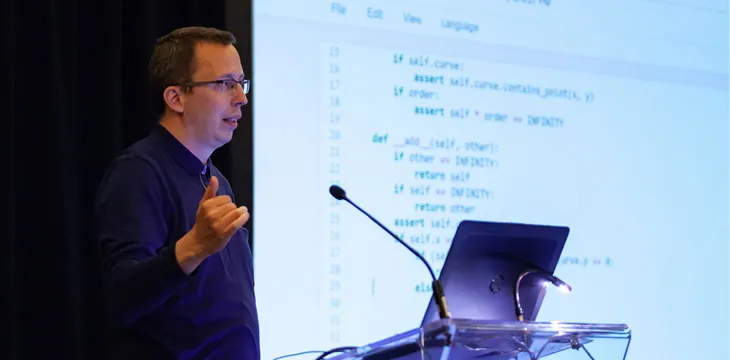|
Getting your Trinity Audio player ready...
|
One of the many large projects that has made its way to the Bitcoin SV (BSV) ecosystem is Nakasendo. It is an interesting solution to using cryptocurrency as a true alternative to fiat in an easy system with a wealth of possibilities. Matej Trampuš, the co-founder and chief technology officer of the CREA Bitcoin development team, was one of the many crypto experts to participate in May’s CoinGeek Toronto 2019 conference, where he gave developers an in-depth look at how far Nakasendo has come and what’s in store for the future.
Nakasendo is a Software Development Kit (SDK) for accelerating development of Bitcoin applications and consists of low- and high-level application programming interfaces (API). It makes use of advanced techniques and ideas that have been developed by the research team at nChain in order to facilitate its rollout and implementation. (1:24)
Version 1 introduced in May 2018. That version implemented a secret store with metadata, private/public keys, signing and encryption, secure key splitting and common secret derivation in order to facilitate its goals and was designed for either Java or C++ coders.
Version 2 is still in the works and will include big numbers library, symmetric encryption/decryption, hashing, BSV Adapter, two types of atomic swaps, threshold signatures and more. It will also expand on the coding languages it supports, bringing in JavaScript and Python support.
One of the many applications possible with Nakasendo is allowing cross-chain transactions, or atomic swaps. Some digital currencies, such as Ethereum (ETH) or Litecoin (LTC), use private keys that, if exposed, would counter their security. Nakasendo can allow someone to send BSV to a LTC or ETH user using a special lock script that indirectly exposes that private key without actually letting it be known. (14:00)
Nakasendo was created to allow a centralized solution for developing on the BSV blockchain. It provides a mechanism for coders from different specialties to use in order to provide solutions that adhere to certain criteria, while facilitating a faster development process to launch applications on the blockchain quicker. It allows for consistent experiences when using an application, regardless of the core language in which the application was developed.

 07-12-2025
07-12-2025 





